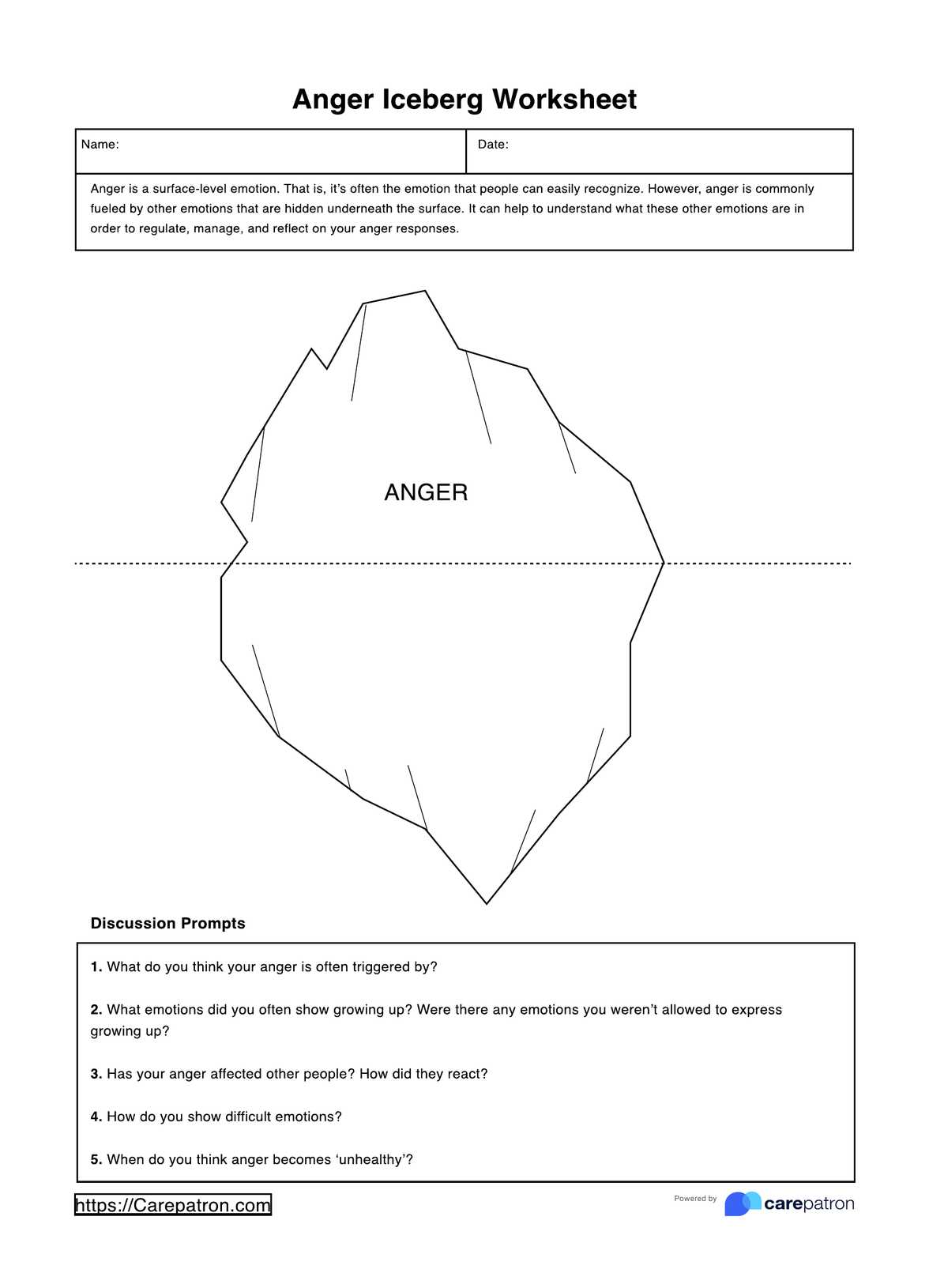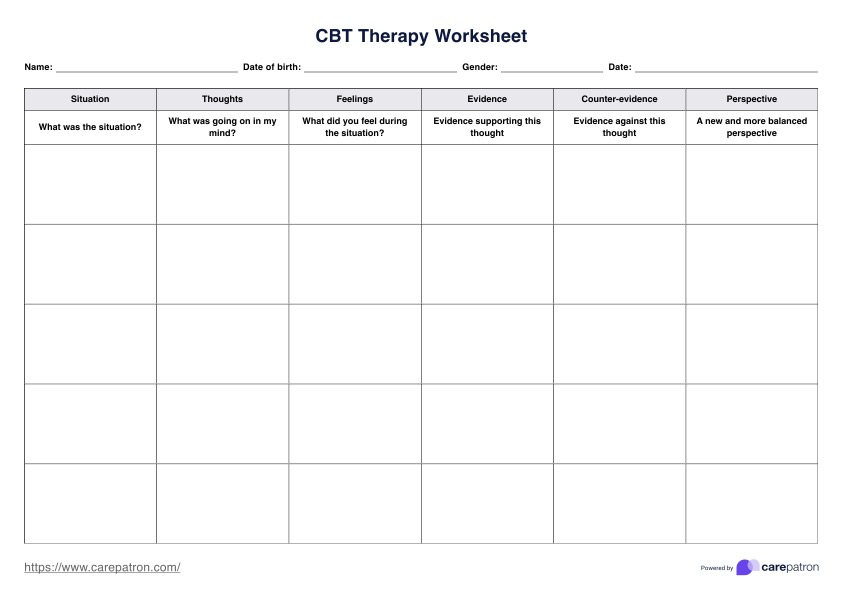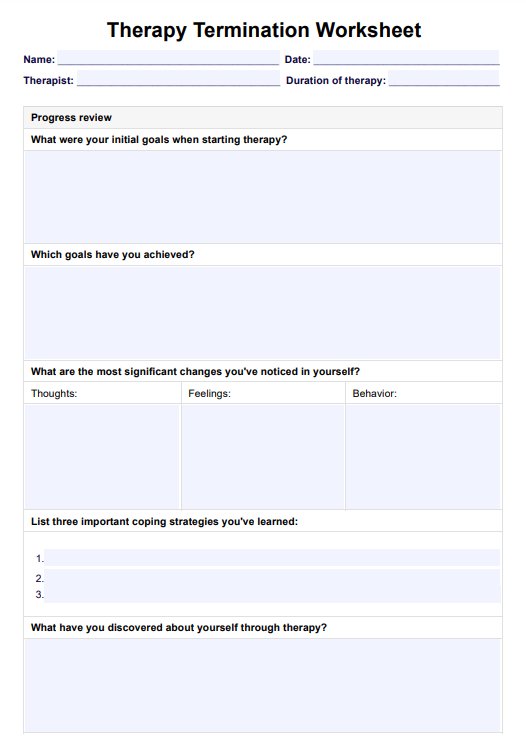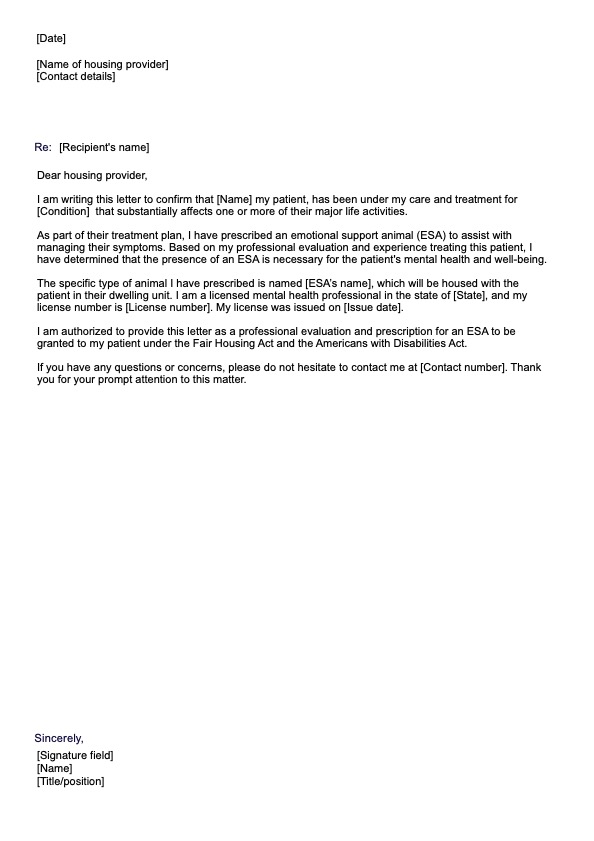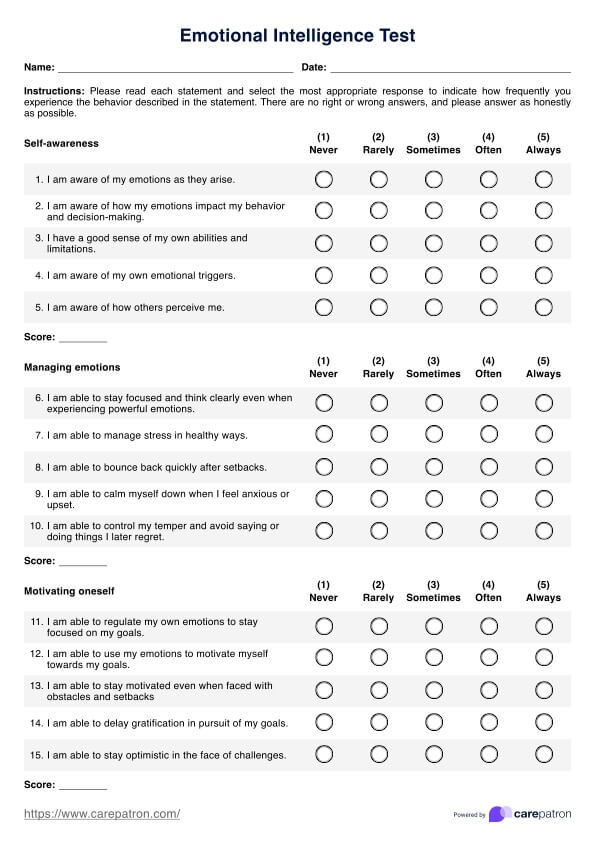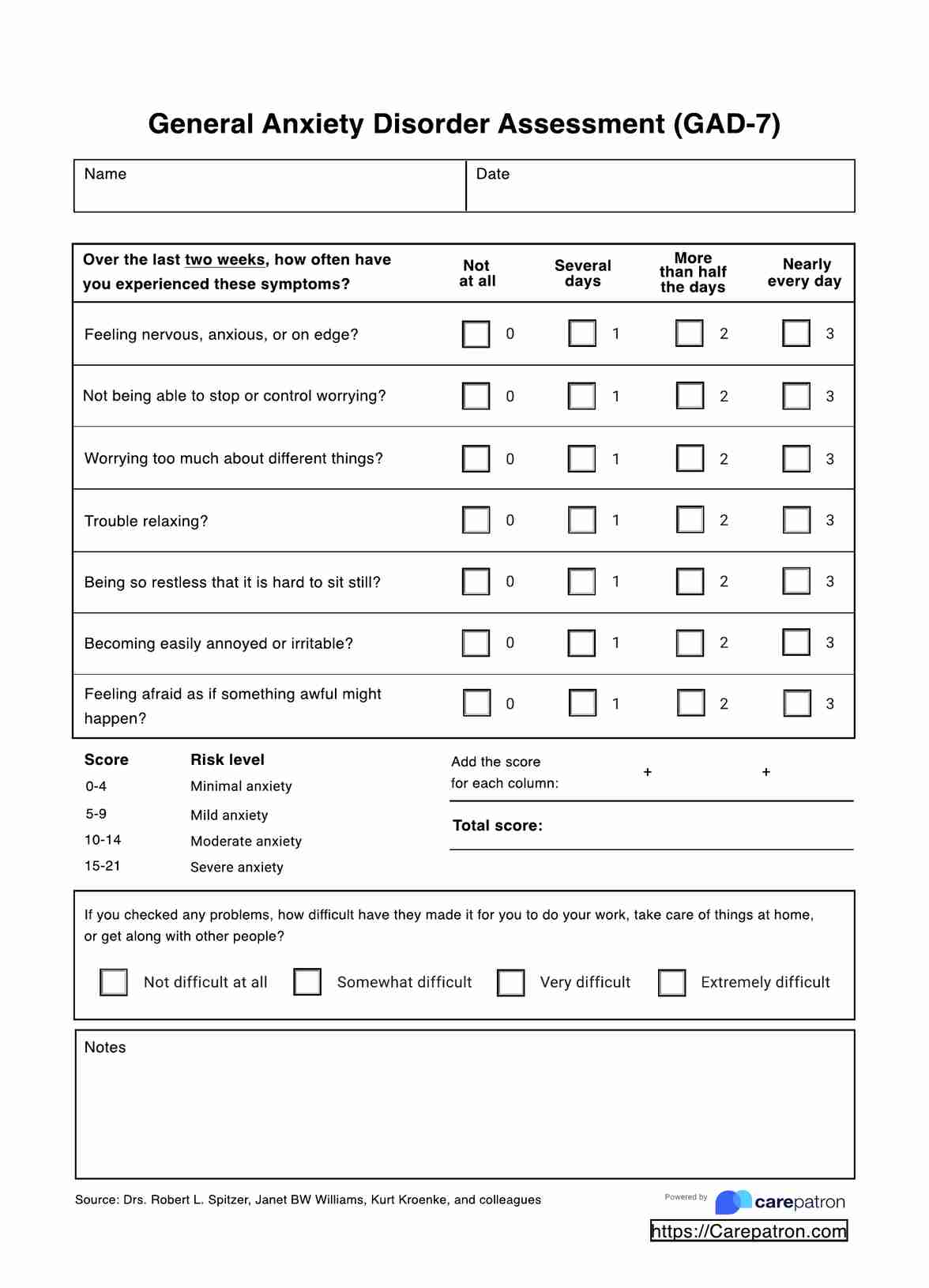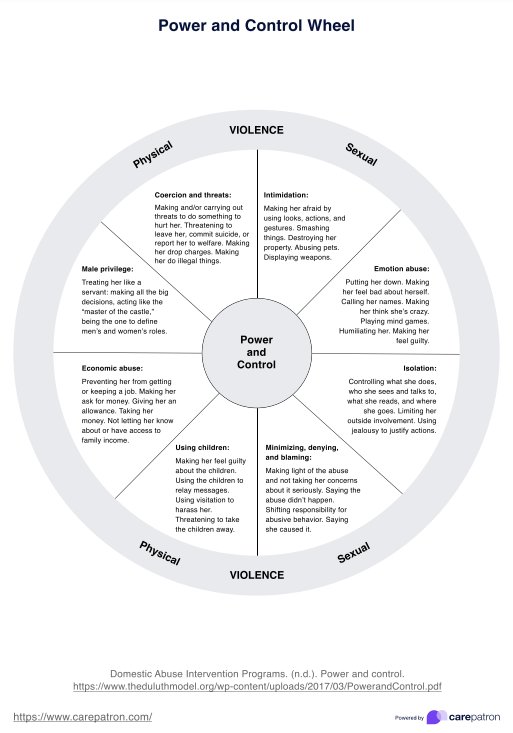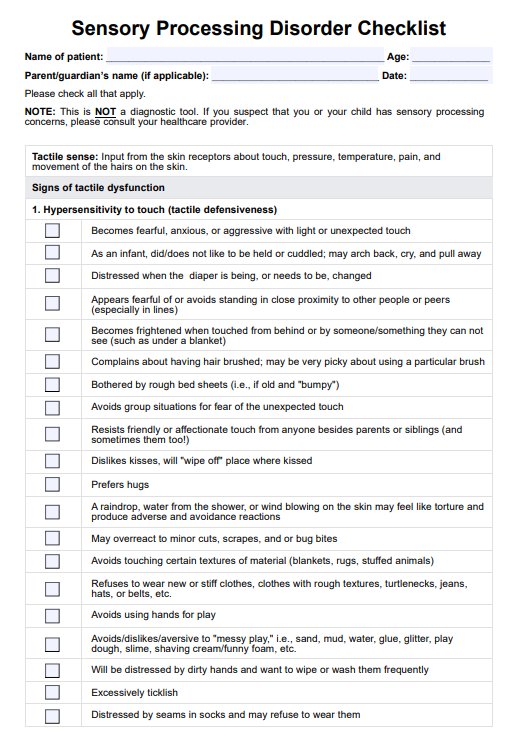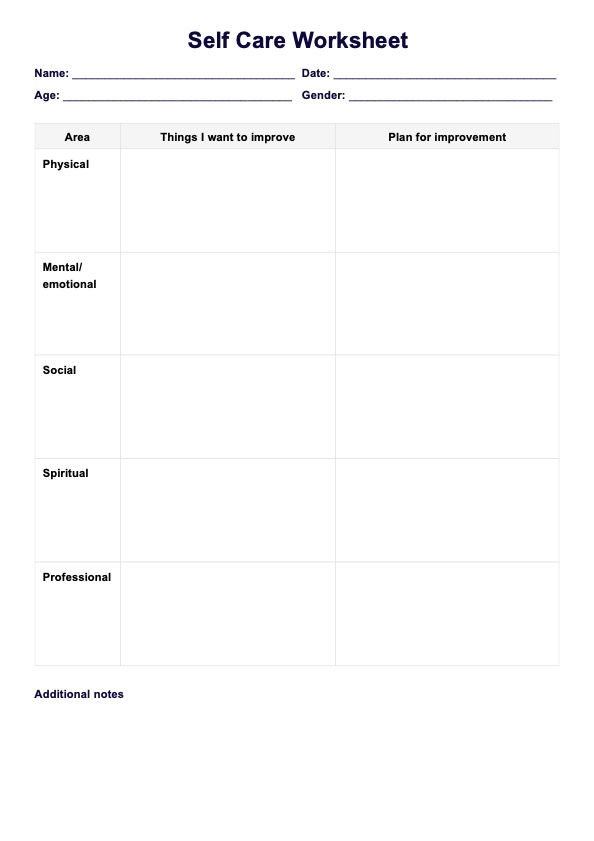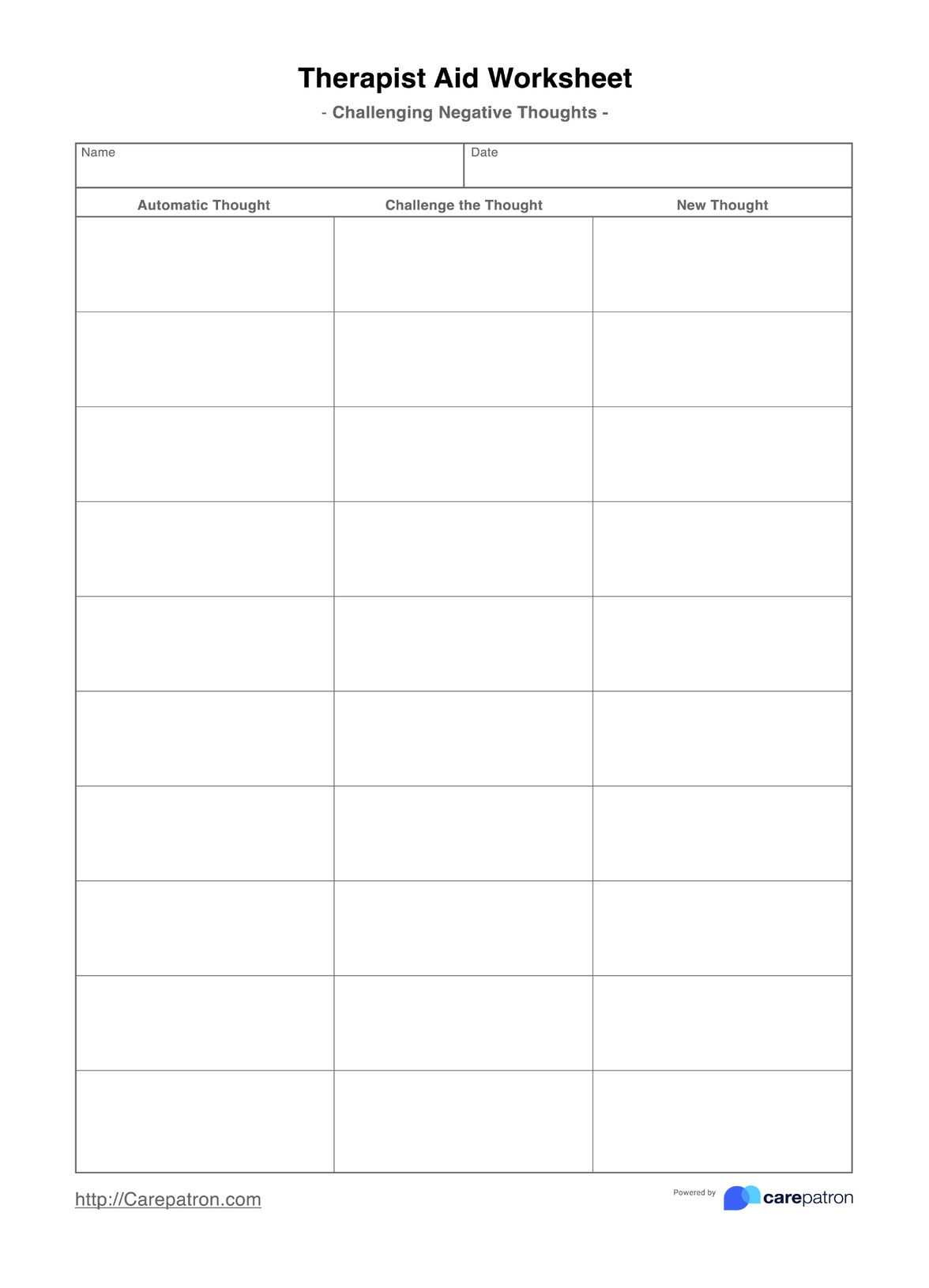Codependency Treatment Plans
Discover the importance of a Codependency Treatment Plan and download a free, printable template with examples to help you create an effective treatment strategy.


What is a Codependency Treatment Plan?
Having someone to turn to during life's troubles can be comforting and is essential for building healthy relationships. However, there's a limit to everything. When reliance on someone becomes excessive, it can lead to a codependent relationship, a form of relationship addiction that can strain connections.
When working with clients in codependent relationships, providing codependency therapy can be highly beneficial. Therapeutic approaches such as cognitive behavioral therapy (CBT) help clients understand and change their behavior patterns. Family therapy is effective, particularly when addressing complex family dynamics. Group therapy offers additional support and perspective from peers facing similar challenges.
As you guide your clients through therapy towards recovery, you can utilize our care plan template and treatment plan template to structure personalized interventions and measure progress effectively. A Codependency Treatment Plan is a comprehensive, goal-oriented tool designed to help mental health professionals address and treat clients struggling with codependency issues. This plan enables therapists to establish specific goals, interventions, and metrics for evaluating progress, ensuring clients have the best chance of overcoming codependency and fostering healthier relationships with loved ones.
Codependency Treatment Plans Template
Codependency Treatment Plans Example
How to use this Codependency Treatment Plan template
Codependency recovery can be challenging, and to assist therapists like you, this Codependency Treatment Plan template can be easily customized to fit the unique needs of each individual. The following steps outline how to use and fill out the template:
Step 1: Download the template
Download the Codependency Treatment Plan template on your preferred device.
Step 2: Collect patient information
Collect relevant information about the client, including demographics, medical history, and presenting issues. This data helps personalize the treatment plan to suit the client's needs.
Step 3: Set clear goals
Define the overall goals of the treatment, focusing on the desired outcomes for the client. These goals should be specific, measurable, achievable, realistic, and time-bound (SMART).
Step 4: Outline interventions
Describe the codependency interventions and strategies to address the client's objectives. These interventions should be evidence-based and tailored to the client's needs.
Step 5: Measure progress
Establish methods to evaluate clients' progress toward meeting their objectives and goals. This may include self-report questionnaires, client feedback, or observable behavior changes.
When would you use a treatment plan for codependency?
A Codependency Treatment Plan is beneficial in various scenarios, ensuring that individuals receive comprehensive and personalized care. In this section, we'll explore typical situations where it is most effective:
- During initial assessment: When a mental health professional identifies signs of codependency during a client's initial assessment, they can develop a treatment plan to address the specific issues contributing to the individual's codependency. This early intervention helps the client start their therapeutic journey on the right path.
- Following a major life event: Significant life events, such as a breakup, divorce, or losing a loved one, can exacerbate codependent tendencies. In these situations, a Codependency Treatment Plan can help the individual navigate their emotions and maintain healthy boundaries during a challenging time.
- When codependent patterns emerge in relationships: If an individual consistently displays codependent behavior, this plan can help them identify and break these patterns. It may include setting boundaries, improving communication skills, and fostering self-care practices.
- In conjunction with addiction treatment: Codependent individuals might also struggle with addiction. A Codependency Treatment Plan can be used alongside addiction and substance abuse treatment to ensure that both issues are adequately addressed, promoting a holistic recovery process.
Remind your client that overcoming codependency is not overnight work and may take more time. You may encourage them to join support groups where they can participate in activities to help improve their low self-esteem and begin by building a healthy relationship with themselves.
Who can use this printable Codependency Treatment Plan?
A printable Codependency Treatment Plan can greatly help various mental health professionals. Here are some professionals who can benefit from using this in their practice:
- Licensed clinical social workers (LCSWs): LCSWs are trained to provide psychotherapy and counseling services. They can use the plan to create a structured approach for clients struggling with codependency issues.
- Licensed professional counselors: As mental health professionals who provide counseling and therapy, they can utilize this to help clients identify and address codependent behaviors in their relationships.
- Marriage and family therapists: These individuals specialize in helping couples and families work through relationship issues. They can use the printable plan to address codependency patterns within the family dynamic and promote healthier interpersonal relationships.
- Psychologists: Psychologists who offer therapy and counseling services can incorporate this into their practice, ensuring that clients receive a comprehensive and personalized approach to addressing codependent behaviors.
- Psychiatrists: While psychiatrists primarily focus on medication management, they can also provide therapy services. In such cases, the Codependency Treatment Plan can be a helpful tool for psychiatrists to offer a holistic treatment approach for their clients.
In summary, this template provides targeted support and guidance, fostering healthier relationships and emotional well-being for clients. Additionally, mental health professionals can also explore our self-care plan template to assist clients in developing personalized strategies for maintaining mental and emotional health.
Benefits of a free Codependency Treatment Plan
Creating a Codependency Treatment Plan from scratch is a time-consuming but essential aspect of healthcare work. With this free template, you can save time and focus more on conducting your therapy session because it offers the following benefits:
Comprehensive and easy to use
Our free Codependency Treatment Plan template includes everything you need and is simple. It is easier to identify specific goals, interventions, and measures to evaluate progress because it provides explicit instructions.
Accessible
A free Codependency Treatment Plan template is available in various formats and can be easily shared or accessed online. This can be useful for people collaborating with others or sharing materials across multiple platforms.
Digital and interactive
Because our free Codependency Treatment Plan template has interactive text boxes, you can fill it out on any device you want. This affects the security of your client's information and the flexibility you can offer them.
Encourages continuity and consistency
Clients can consistently track their codependency mechanisms and progress using the same Codependency Treatment Plan template across therapy sessions.
Commonly asked questions
A Codependency Treatment Plan should be used when a client presents with symptoms or patterns of codependency in their relationships. A comprehensive approach is needed to address these issues.
To write a Codependency Treatment Plan, gather patient information, set clear goals, identify objectives, outline interventions, and establish methods to measure progress.
Codependency Treatment Plans are helpful because they provide a structured, goal-oriented approach to treating codependency, facilitate clear communication, track client progress, and enhance the therapeutic process.


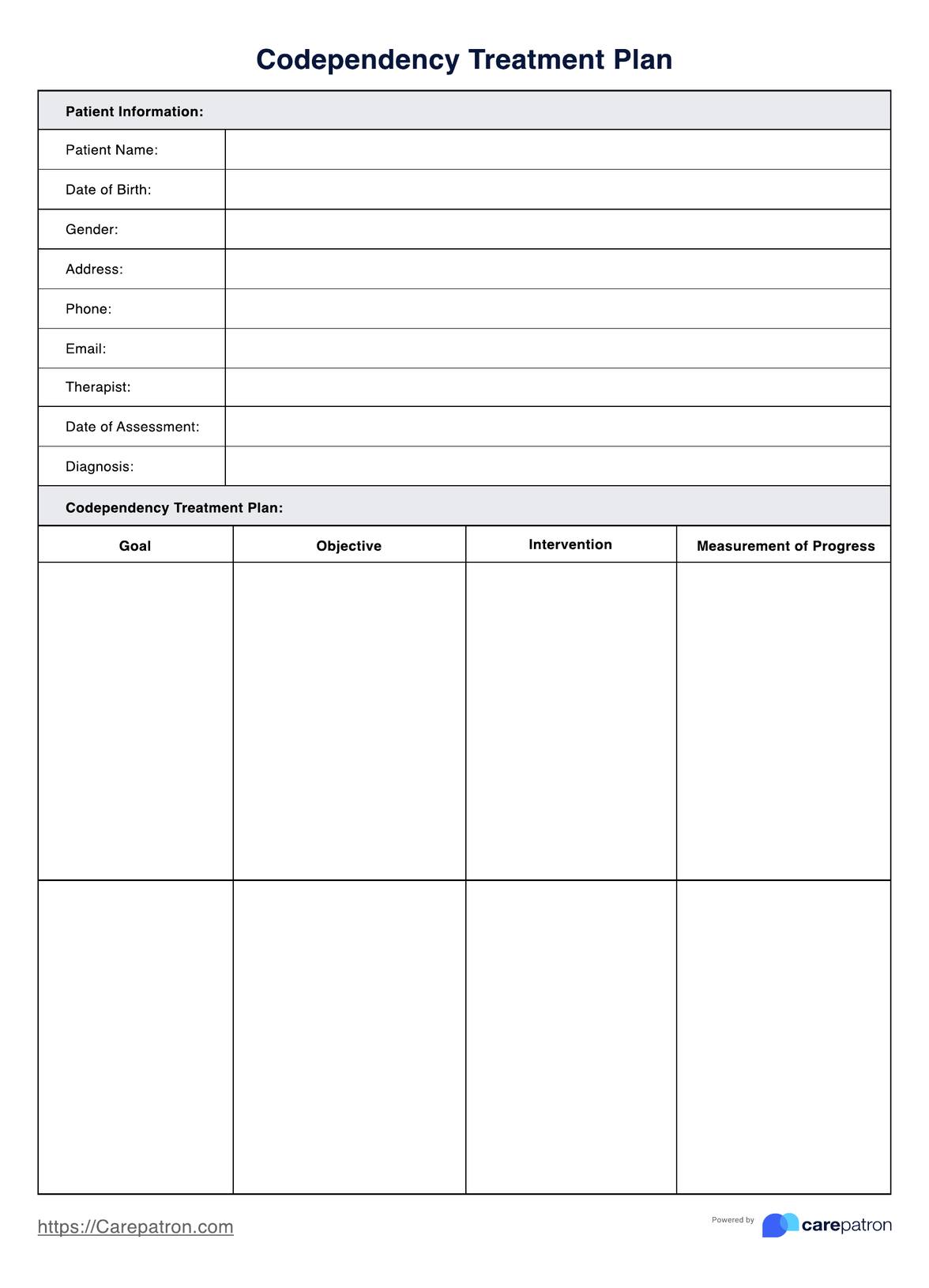
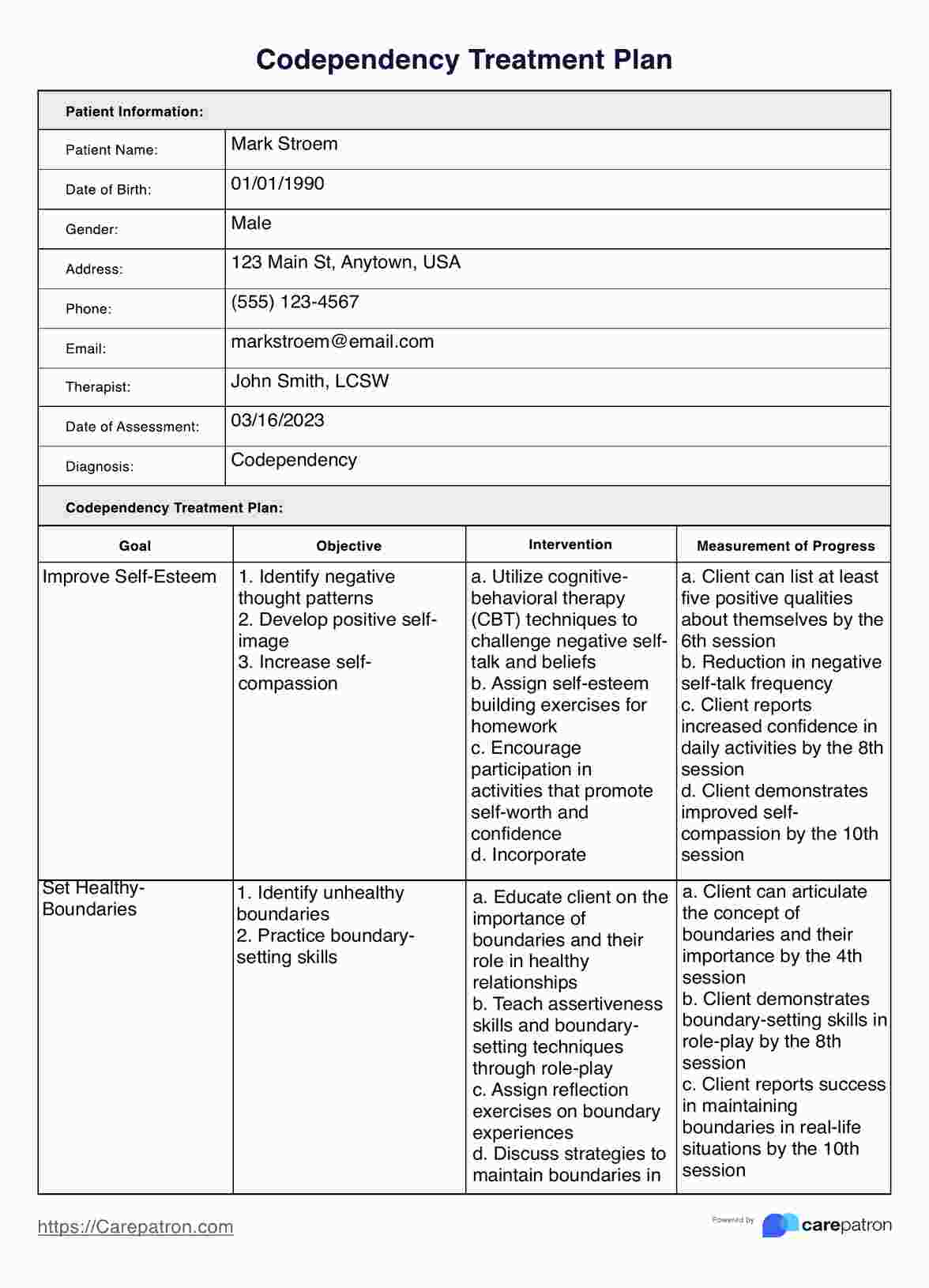

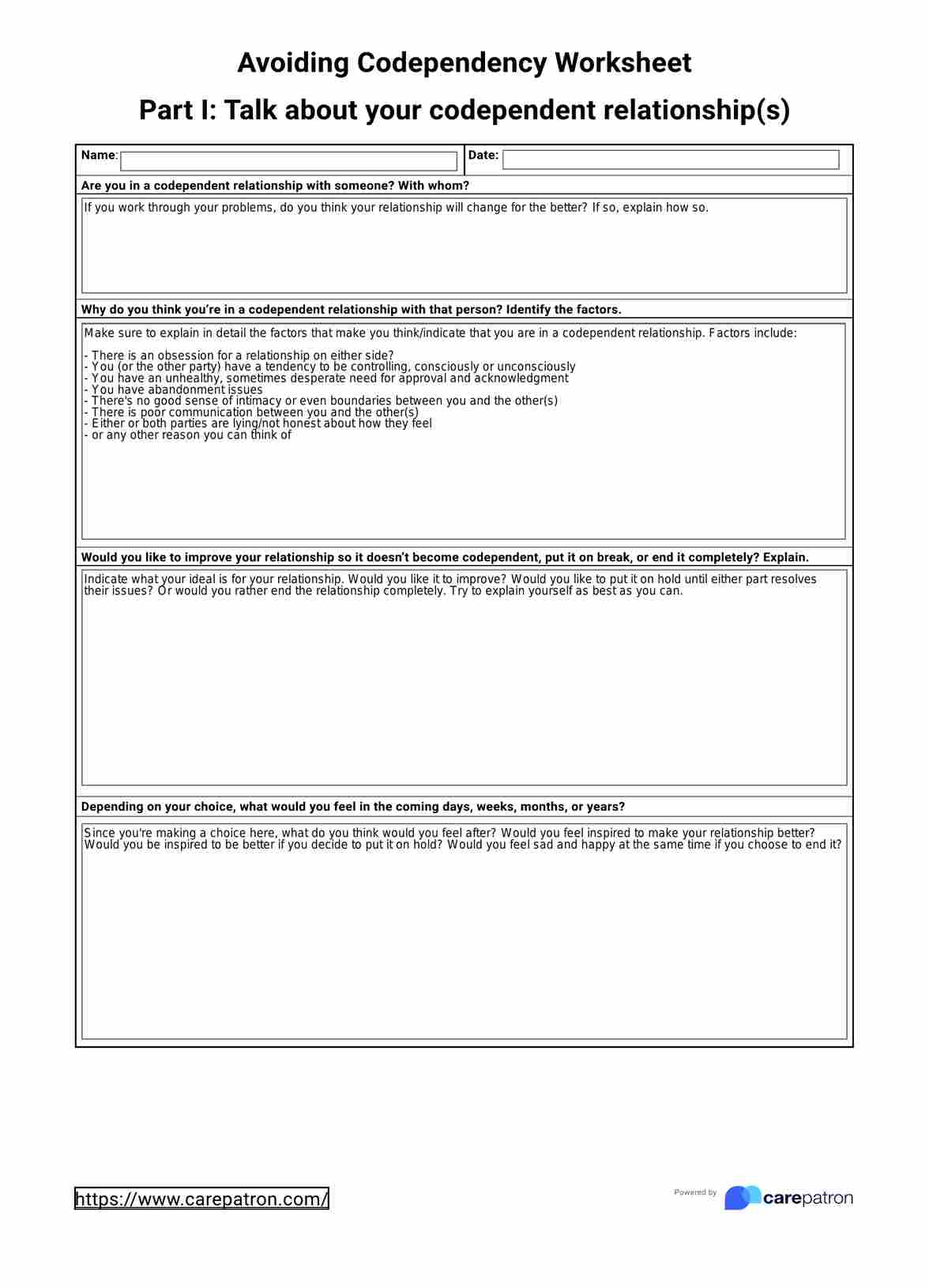
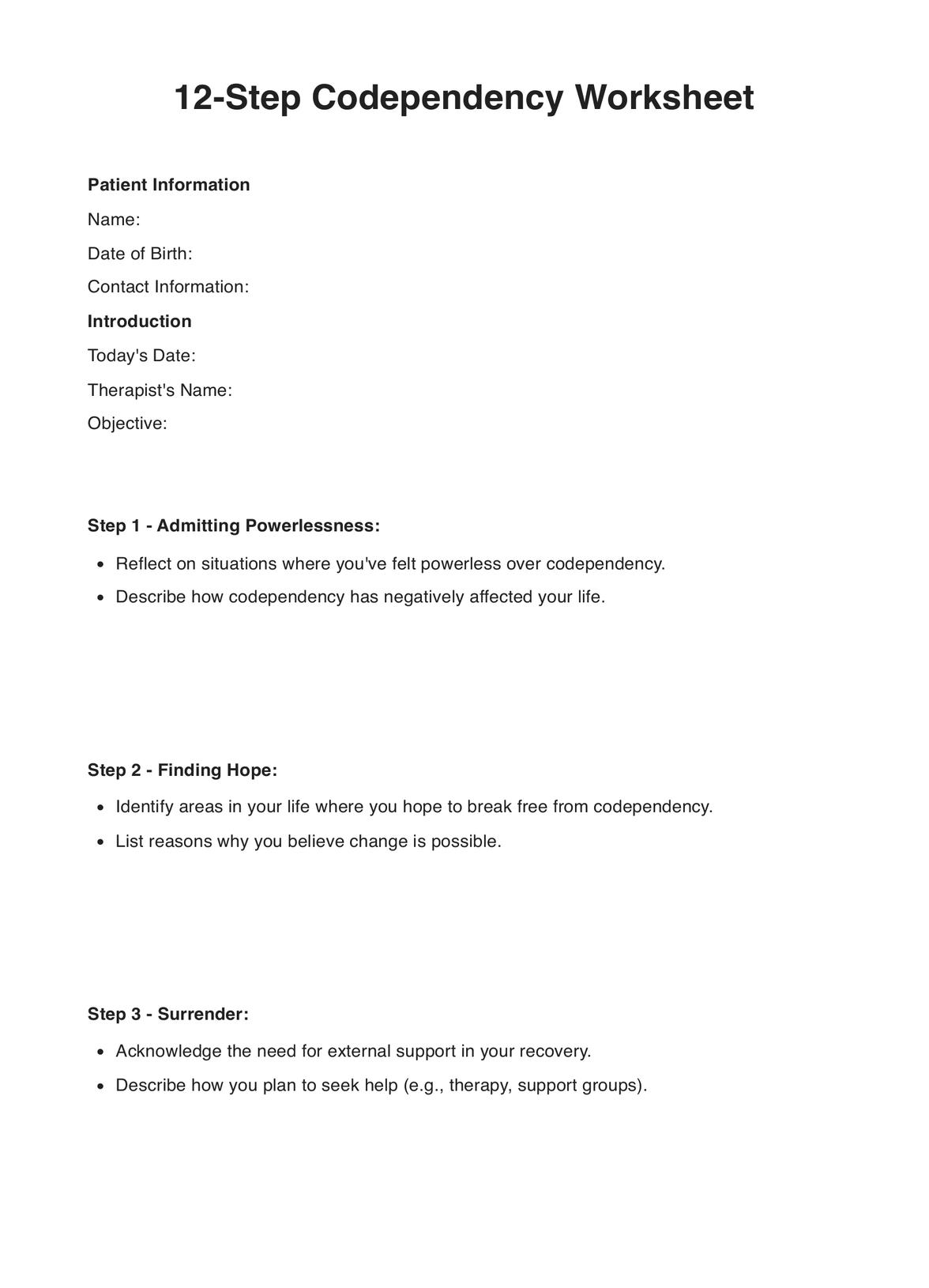
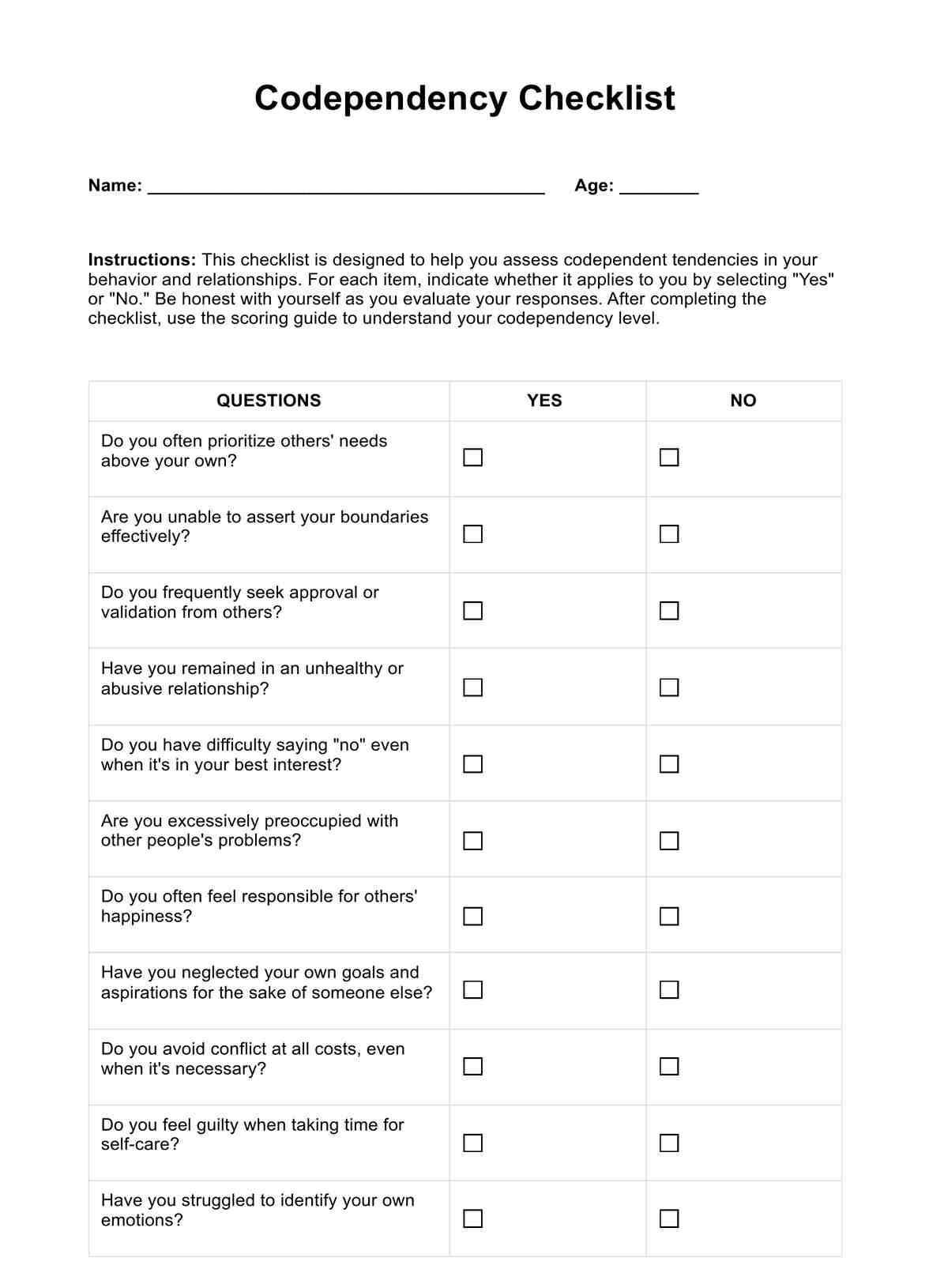














-template.jpg)





















































































